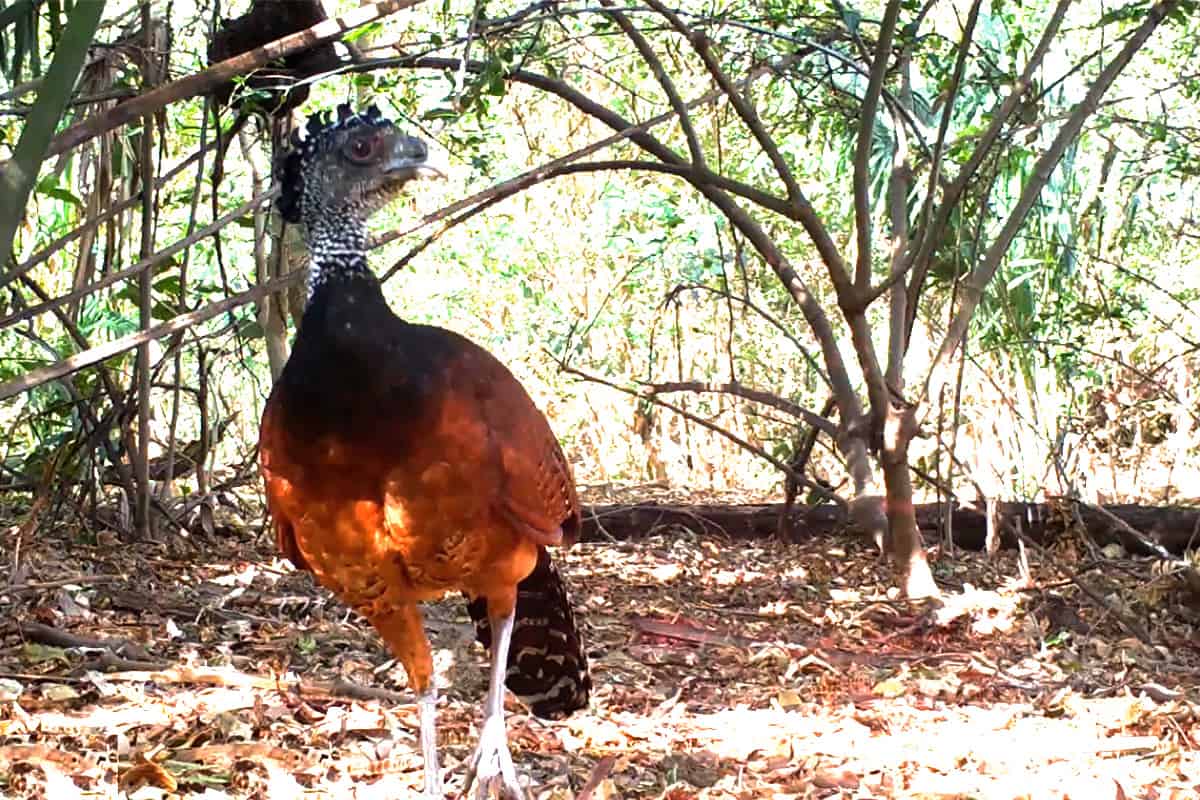In the animal kingdom, fanciness is genetic. Depending on the group of animals, either the male or female may sport a real flamboyant look designed to catch the eye of the opposite sex and say something like, ‘Hey, I’m worth combining genes with.’
When it comes to birds, usually it’s the male that’s hands down prettier than the female. Did you ever see the tanager page of a Costa Rica bird book? It’s filled with a rainbow of male birds, each with a drab olive-colored female at their side.
In the case of the great curassow (Crax rubra – an easier one to remember), I’m not sure who wins the beauty pageant. The male comes in strong with formality. He’s wearing a tux. He’s in full black and white. His hair, a perfectly styled mohawk. Then he tops it off with a splash of color with a bright yellow beak with a funky knob on top. He’s a 9 out of 10, easy.
The female comes strong with the same impressive size (sometimes over 10 pounds) and funky spikey haircut, but her main body color is brown. She almost loses the contest with the kind of normal-colored body, but she makes up for it with a stripey tail and black head that’s covered in white specks.
This is obviously a ‘beauty is in the eyes of the beholder’ situation. Which do I prefer? Well, I’ve got a way too specific/I know a little too much about curassows kind of answer. My favorite is the female great curassow but not just any female. There’s a type of female that occurs in northern Guanacaste that they call the ‘barred morph female.’ It’s similar to the regular female, except replace the plain brown body with a stunning array of white, brown and black stripes. I’ve never seen one in person, but I’ve recorded them a few times on my camera traps. For me, they take the cake.
While very common in some areas, they’ve been eradicated in other parts of their historical range. In the area of Guanacaste where I live, there are no great curassows. I use them as an indication of the level of biodiversity in an area when I’m doing a camera trap project. Usually, when I start to record great curassows, I’ll record other species that sometimes can be missing from the landscape like collared peccaries or crested guans.
I enjoy recording great curassows even more than I enjoy seeing them in the forest. Sometimes I’ll get a pretty good look at one as it crosses my trail in the distance, but usually my curassow interactions consist primarily of an explosion of feathered wings and a quick glimpse of a big bird flying and honking into the safety of a distant tree.
While a little difficult to interact with in the field, they’re practically made for camera traps. They seem happy to saunter up to the cameras, investigate the strange device strapped to a tree, then pose for a while, walk away and then return for one more closeup.
A friend told me recently that years ago he had a great curassow as a companion. Folks will find eggs in the forest and drop them off under a hen in their henhouse. When it hatches, you’ve got yourself a great curassow that thinks it’s a chicken. His used to follow him hundreds of meters into the forest and watch him work as he maintained trails.
If you haven’t had the good luck of seeing a great curassow in person, then take a look at the following video from my camera traps. Also, keep an eye on your neighbor’s chickens. There might be a fancy one mixed in.
About the Author
Vincent Losasso, founder of Guanacaste Wildlife Monitoring, is a biologist who works with camera traps throughout Costa Rica. You can contact him at: vincent@guanacastewildlifemonitoring.com

